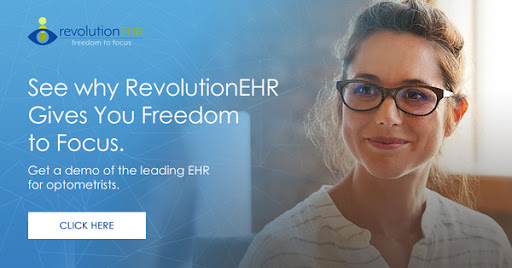Don’t Forget These Patients During Save Your Vision Month
Highlights
- This March is Save Your Vision Month, the perfect time to help high-risk patients focus on taking care of their eye health.
- High-risk patients, such as construction workers, drivers, and those over 40, can benefit from compressive exams and specialty eyewear.
- By helping patients find eyewear such as polarized lenses or prescription protective eyeglasses, you can help them prevent vision loss.
During Save Your Vision Month this March, it’s essential to help your high-risk patients focus on their eye health. Patients who work in construction or manufacturing jobs, are over 40, or have hobbies that require attention to small details can benefit from comprehensive eye exams and specialty eyewear.
Sharing educational information with these patients and getting them in for a yearly exam can improve their vision and quality of life.
At-Risk Patients
Around three million Americans suffer from glaucoma, while age-related macular degeneration (AMD) affects approximately 12.6% of adults over 40. Both conditions can lead to vision loss without early detection and treatment.
At-risk patients, such as those with a family history, conditions like diabetes, or any patient over 60 years old, need to know when it’s time for glaucoma and AMD screening. Sending reminders via SMS or email about comprehensive eye screenings can go a long way in encouraging patients to prioritize their eye health and attend their appointments, potentially preventing vision loss or other complications.
Computer Users Who Want to Reduce Eye Strain
Prolonged use of computers and other digital devices can lead to eye strain. This may be due to the limited contrast between the letters and the screen background, screen reflections and glare, incorrect viewing angle and distance, and infrequent eye blinking.
Up to 65% of computer users experience digital eye strain, including approximately 60% of children. Eye strain is characterized by dry eyes, eye watering, headaches, foreign body sensation, and blurred vision.
Your practice can play a crucial role in helping computer users reduce or eliminate digital eye strain. Educate your patients about proper viewing distances and angles, appropriate lighting, and remind patients to take regular breaks, blink frequently, and perform eye exercises.
Recommend specialized glasses or lenses to reduce the strain on the eyes caused by digital screens, such as glasses with tinted or anti-glare lenses to block blue light.

Drivers Who Need Enhanced Contrast
Clear vision is crucial for safe driving. Poor vision, resulting from age-related changes or specific eye diseases like glaucoma or monocularity, can negatively impact driving performance by compromising visual acuity, contrast sensitivity, and visual fields. While poor visual acuity and a limited visual field can prohibit people from driving in 40 of 51 jurisdictions, contrast sensitivity is not currently a licensing requirement in any state.
You can prescribe specialty eyewear to improve contrast and clarity in patients with sensitivities or conditions like cataracts. Let your patients know that eyewear fitted with bioptic telescopes can increase clarity at further distances, polarized lenses can reduce glare from reflective surfaces, and anti-reflective coatings can improve vision in low-light conditions.
Additionally, photochromic lenses can adapt to changing light conditions, providing optimal vision during different times of day.
Athletes Who Need Eye Protection
Approximately 42,000 sport-related eye injuries occur in the United States every year, of which 7.2% result in permanent blindness. Most eye injuries result from blunt force trauma from contact with other players or sports equipment. Other eye injuries include corneal abrasions, hyphema, and retinal detachment.
Protective eyewear can reduce the risk of eye injuries by providing a barrier between flying objects and debris and acting as a shock absorption device against direct contact. Encourage athletes and patients with children who play sports to come in for a fitting for protective eyewear.
Hobbyists Who Want Improved Clarity
If you have patients with hobbies that require seeing fine details or colors, such as photography, painting, sewing, or making jewelry, you can help them maintain or improve vision clarity.
During their visit, recommend eyewear options specifically designed to enhance color perception and contrast. These include tinted lenses or photochromic lenses that adjust to changing light conditions.
You can also assess for any underlying eye conditions impacting visual acuity, such as myopia, age-related macular degeneration, or diabetic retinopathy, and provide treatment.

Workers Who Need to Comply With Safety Regulations
As an optometrist, you can share valuable information with workers who must comply with safety regulations regarding protective eyewear on the job. Work with your patients to identify potential hazards in the workplace and recommend appropriate eyewear to prevent eye injuries.
The CDC reports that every day, nearly 2,000 workers sustain eye injuries requiring medical attention. These injuries often involve eye scrapes or penetration from small items like wood chips, dust, or staples.
You can help construction, manufacturing, and industrial workers find appropriate prescription safety glasses or goggles to shield their eyes from flying debris or hazardous chemicals while working.
You can also encourage comprehensive eye exams to assess vision and detect underlying eye conditions that may affect job performance or safety, such as dry eye syndrome, glaucoma, cataracts, or blurred vision.
Boaters and Fishermen Who Want to Reduce Glare
Many people use protection, such as sunscreen, to prevent sun damage on their skin. However, according to a 2022 study, a significant number of people don’t realize UV’s harmful effect on eye health.
Nearly 59% of people surveyed reported not using protective eyewear when exposed to UV rays, increasing their risk of eye diseases like cataracts and squamous cell carcinoma.
For people who work outdoors, like boaters and fishermen, wearing protective eyewear is essential for maintaining healthy vision. Share the importance of wearing protective eyewear to reduce glare and protect your patients’ eyes from harmful UV rays. Suggest polarized lenses to minimize glare from water surfaces or wrap-around frames to shield their peripheral vision.
Boost Eyecare at Your Practice During Save Your Vision Month
Save Your Vision Month provides you with an opportunity to raise awareness about the importance of annual comprehensive eye exams and specialty eyewear for high-risk patients. Educating and encouraging your patients to prioritize preventative eye care can help them prevent vision loss and maintain their eye health.
With RevConnect, patient communication tools that work within RevolutionEHR, you can send educational emails and texts to help your patients learn about vision health and to remind them to schedule their next exam with your practice.
RevolutionEHR is an integrated optometry practice management system that can support your practice by streamlining workflows, automating patient visits, and simplifying charting and billing.
Schedule a demo with a RevolutionEHR Specialist to see how an integrated optometry EHR can give you the freedom to focus on patient care.

